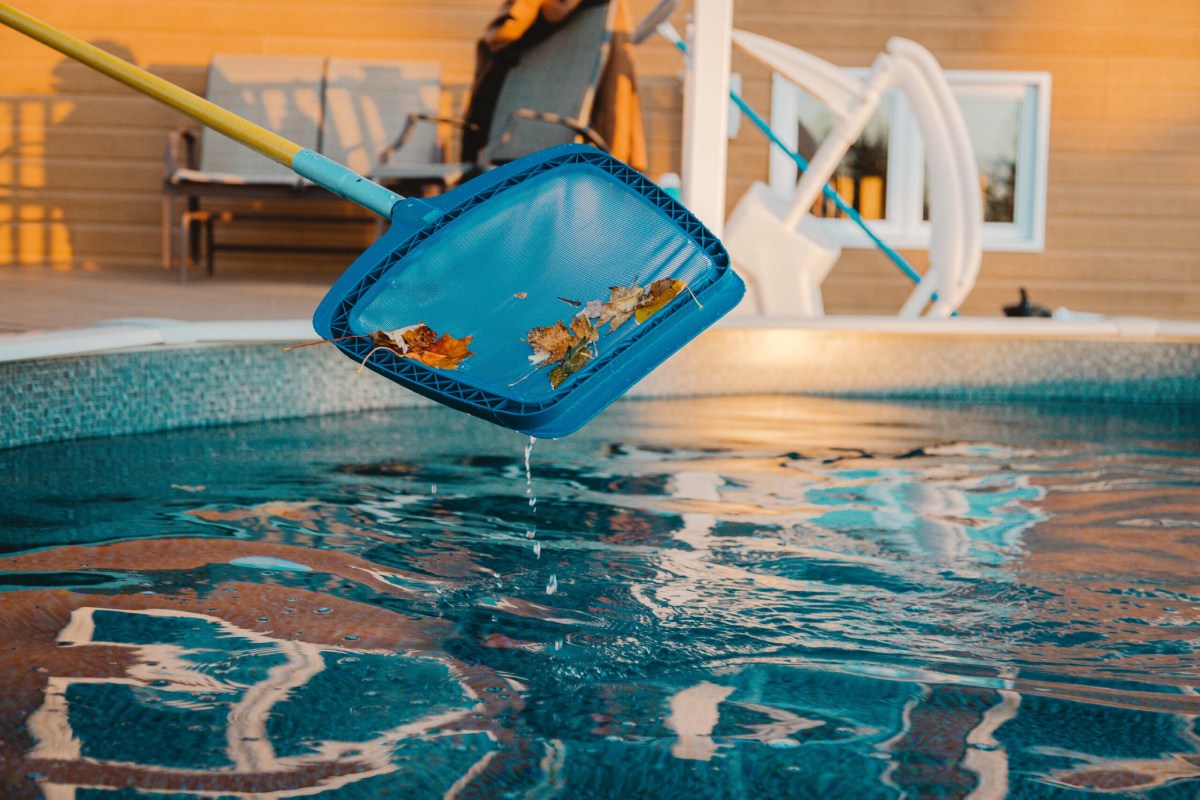The weather is getting cooler, the sun is hiding away—there’s no doubt about it, fall is here. It’s time to think about closing your pool, an essential step to protect your equipment, prevent frost damage, and ensure clean water in the spring.
When should you close your pool?
To know when to close your pool, don’t look at the calendar, look at your pool thermometer. The ideal time to close your pool is when the water temperature stabilizes around 10 to 12°C (50-54°F).
Why wait? Closing your pool when the water is still too warm (above 12-15°C) will turn your pool into a breeding ground for algae and bacteria during the winter, making it much more difficult and costly to open in the spring. In Quebec, the ideal time to close your pool is generally between the end of September and mid-October.
Preparation: essential measures before closing
Good preparation is half the battle. Shortly before the planned closing date, start with these essential steps.
Water balancing
Well-balanced water will protect your pool’s liner (vinyl, concrete, etc.) and equipment from corrosion during the winter. Perform a complete water analysis and adjust the following parameters:
- pH: between 7.2 and 7.6
- Total alkalinity: between 80 and 120 ppm
Deep cleaning
It is essential to close your pool as clean as possible.
- Remove the ladder and other equipment.
- Vacuum the bottom of the pool thoroughly.
- Gently brush the walls and waterline to remove algae and deposits.
- Use a leaf skimmer net to remove all leaves and other floating debris.

Shock treatment
Perform a chlorine shock treatment one or two days before closing. This will eliminate all bacteria, algae, and other organic contaminants. Leave the filtration system running continuously for 24 to 48 hours after treatment to ensure the product is thoroughly distributed.
Step-by-step guide to closing your pool
Once maintenance is complete, follow these steps for hassle-free winterization.
1. Final cleaning
Backwash your filter or thoroughly clean your cartridges with a degreasing product designed for this purpose.
2. Lowering the water level
This step is essential to protect your skimmer and return jets from freezing. Using a vacuum or the bottom drain, lower the water level in your pool until the waterline is between 30 and 40 cm below the return jet.
3. Winterizing pipes and equipment
This is the most technical step, but also the most important one to avoid costly damage.
Once the water level has been reduced, remove the skimmer door and basket, as well as the water return eye.
Disconnect all the pipes connecting the skimmer to the pump, the pump to the filter, and the filter to the water return. If you heat your pool or if it is a saltwater pool, disconnect the heater and the salt chlorine generator.
Then disconnect the hose connecting the bottom drain to the multiport valve to connect the extension hose. Attach this hose to a stake or the edge of your pool and pour in pool antifreeze for extra protection.
Protect the bottom drain hose by inserting and securing a plug at the inlet.
Finally, plug the return jet tightly and insert a block of Styrofoam into the skimmer to protect it from freezing.
4. Preparing the filter, pump, water heater, and chlorine generator
Filter: Unscrew the drain plug to empty all the water. Remove the pressure gauge, glass bulb, drain pipe clamp, and seals. Keep them in a safe place for next year.
Pump: Unscrew the drain plugs to empty the water. Store it indoors in a dry, frost-free place.
Heat pump: Disconnect the inlet and outlet connections and make sure there is no water left inside using a wet/dry vacuum cleaner or leaf vacuum.
Salt chlorine generator: Unplug it and clean the cell before storing it in a sheltered place.
5. Adding winterizing products
Now it’s time to add the products from your winterizing kit. This usually contains a winter algaecide and an anti-stain and anti-scale product. Distribute them evenly throughout the pool.
6. Installing the winter net cover
Prevent debris such as leaves from falling into the water by using an elastic system and a winter net. This will make it easier to clean the pool when it reopens and protect your pool cover from the sun.
Mistakes to avoid when closing your pool
- Closing the pool too early: There is a real risk of algae growth.
- Forgetting to completely empty the pipes: Frost can cause pipes to burst, leading to costly repairs.
Call on your Aqua Master to close your pool
Closing a pool requires time, specialized equipment, and a certain amount of expertise. By entrusting the task to a Master, you are ensuring:
- Safe and complete closure
- Protection of your equipment
- Peace of mind all winter long
Aqua Master offers a pool closure service and ensures that all your equipment will be ready to use again next year.




Leave us your comment